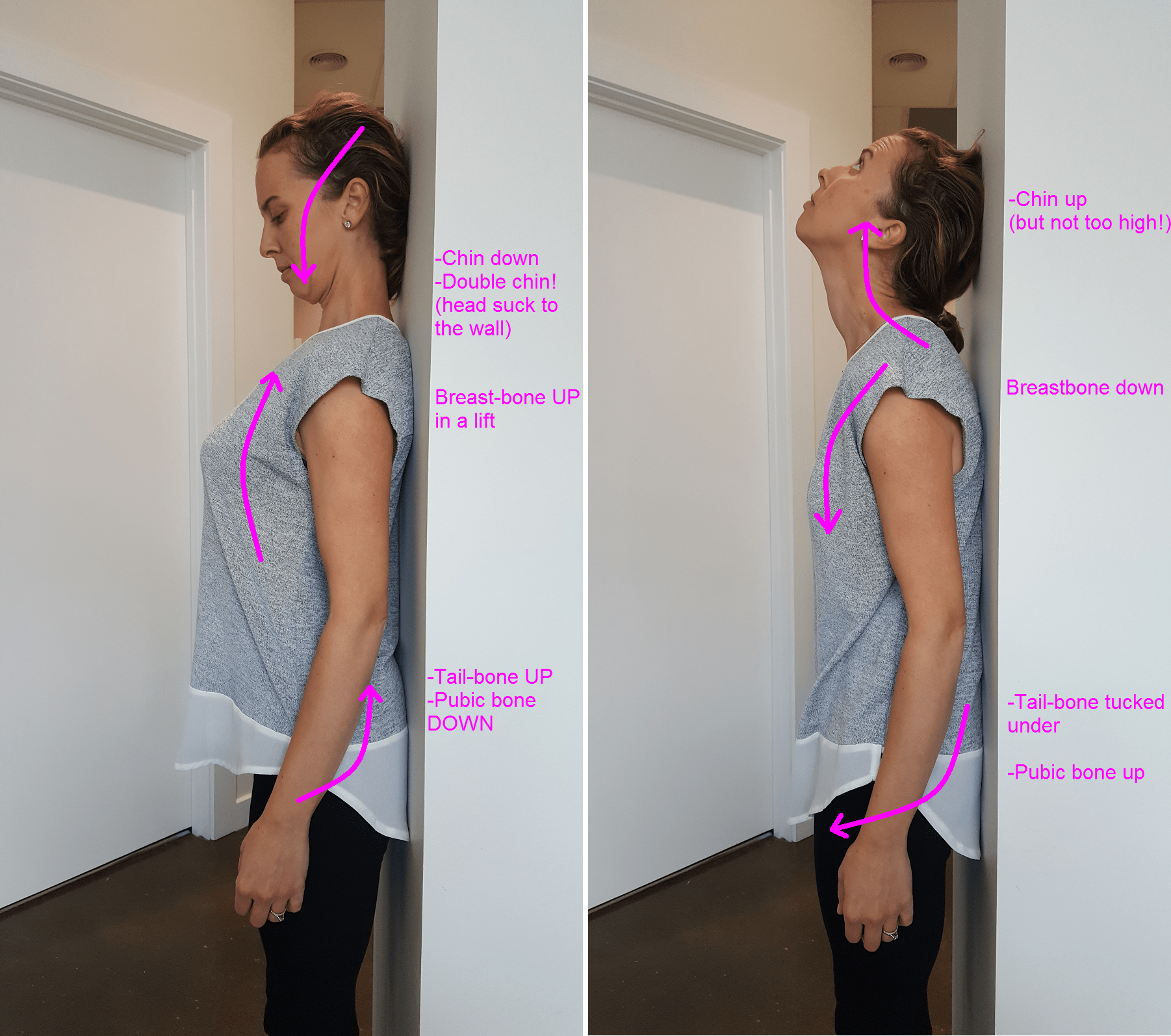The following movement patterns have been developed following Gary Ward’s Anatomy-in-Motion, Flow Motion Model®
COGS are a wonderful movement experience to practice.
The experience is not about forcing the ends of the movements, but is about learning how you move throughout the spectrum of movement available. Maintain a meditative pace throughout to really experience the path your body takes.
What to keep track of throughout:
- keep 3 points of contact (skull, rib cage and pelvis) on the wall
- Don’t allow bent knees when tucking your tail-bone under!
- The head will likely want to leave the wall when you make a double-chin…go slow and keep adjusting back to the wall
- ENJOY and BREATHE
What movements do you feel are difficult in your body that could benefit from closer focus with your mind?
What movements feel easy that you might over-emphasize to compensate for another?
- When tilting your tail-bone up (dropping your pubic bone down), it can jam up your low back. It also limits the movement available in your rib cage. Ease up on this pelvic movement and try and work the rib cage instead (sternum lifts up)
- When your chin tilts up, don’t go too far and recruiting your neck. Try and keep it as a skull movement and utilise the sternum again but this time encouraging the sternum to drop down and pull back towards the spine

